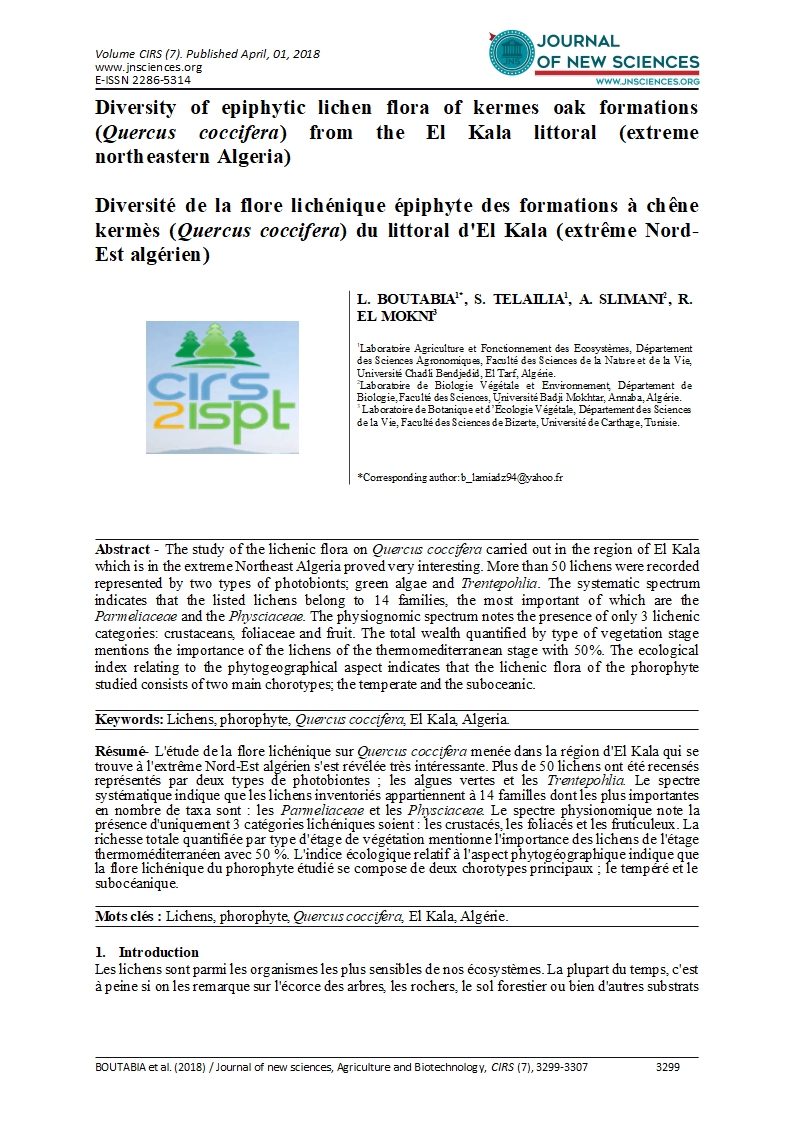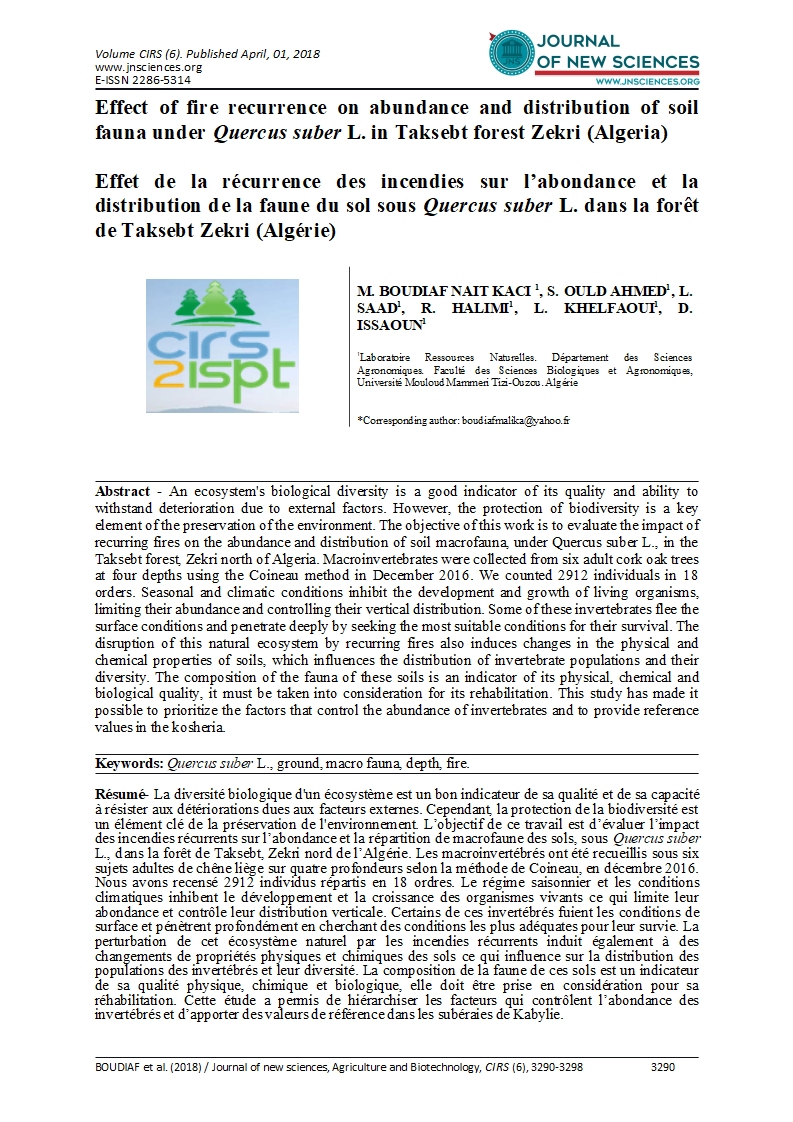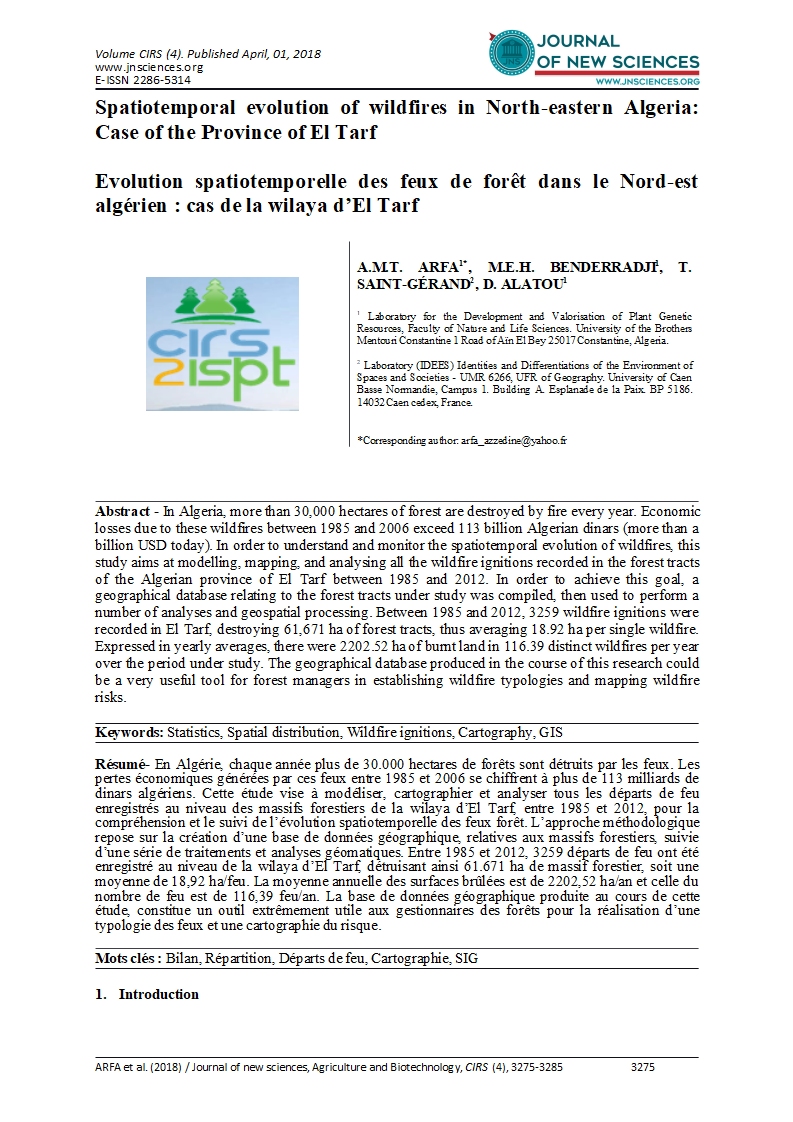- Category: VOLUME SPÉCIAL (CONFÉRENCE CIRS 2017)
- Hits: 12336
Chemical properties and anti nutritional factors of Moringa oleifera.
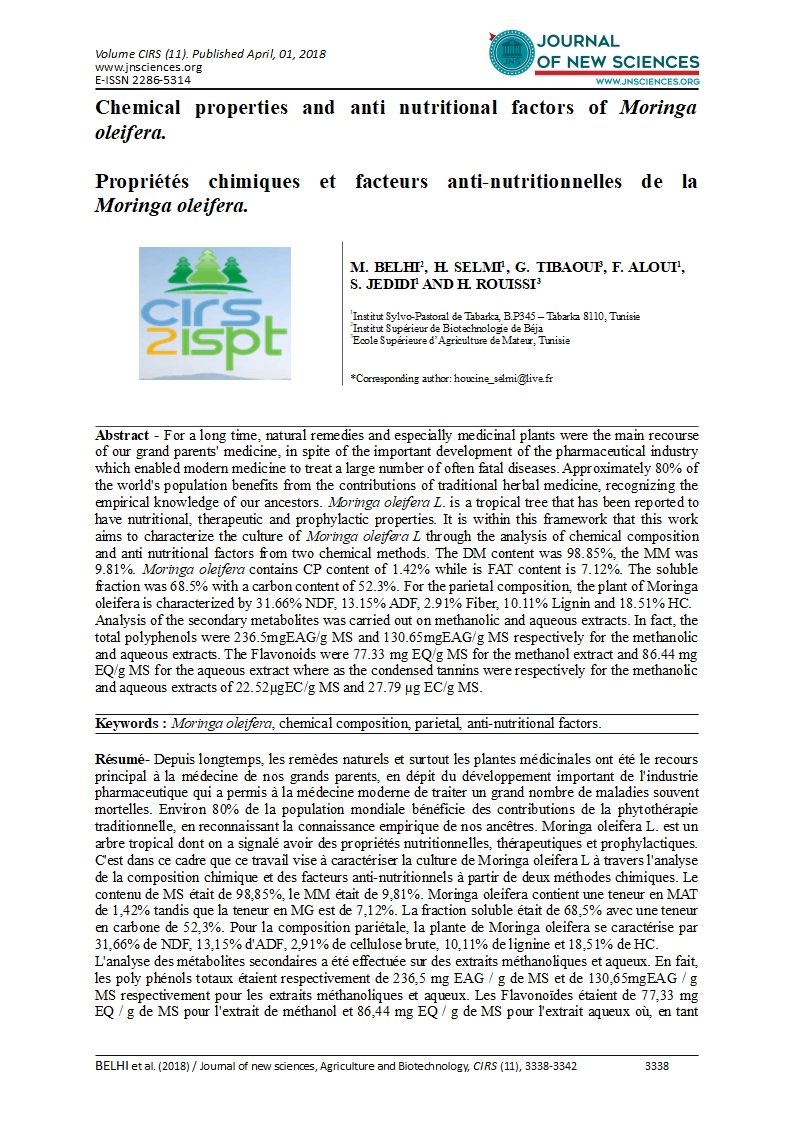
Propriétés chimiques et facteurs anti-nutritionnelles de la Moringa oleifera.
|
|
M. BELHI2 H. SELMI1 G. TIBAOUI3 F. ALOUI1 S. JEDIDI1 H. ROUISSI3
1Institut Sylvo-Pastoral de Tabarka, B.P345 – Tabarka 8110, Tunisie 2Institut Supérieur de Biotechnologie de Béja 3Ecole Supérieure d’Agriculture de Mateur, Tunisie |
Abstract - For a long time, natural remedies and especially medicinal plants were the main recourse of our grand parents' medicine, in spite of the important development of the pharmaceutical industry which enabled modern medicine to treat a large number of often fatal diseases. Approximately 80% of the world's population benefits from the contributions of traditional herbal medicine, recognizing the empirical knowledge of our ancestors. Moringa oleifera L. is a tropical tree that has been reported to have nutritional, therapeutic and prophylactic properties. It is within this framework that this work aims to characterize the culture of Moringa oleifera L through the analysis of chemical composition and anti nutritional factors from two chemical methods. The DM content was 98.85%, the MM was 9.81%. Moringa oleifera contains CP content of 1.42% while is FAT content is 7.12%. The soluble fraction was 68.5% with a carbon content of 52.3%. For the parietal composition, the plant of Moringa oleifera is characterized by 31.66% NDF, 13.15% ADF, 2.91% Fiber, 10.11% Lignin and 18.51% HC. Analysis of the secondary metabolites was carried out on methanolic and aqueous extracts. In fact, the total polyphenols were 236.5mgEAG/g MS and 130.65mgEAG/g MS respectively for the methanolic and aqueous extracts. The Flavonoids were 77.33 mg EQ/g MS for the methanol extract and 86.44 mg EQ/g MS for the aqueous extract where as the condensed tannins were respectively for the methanolic and aqueous extracts of 22.52µgEC/g MS and 27.79 µg EC/g MS.
Keywords : Moringa oleifera, chemical composition, parietal, anti-nutritional factors.

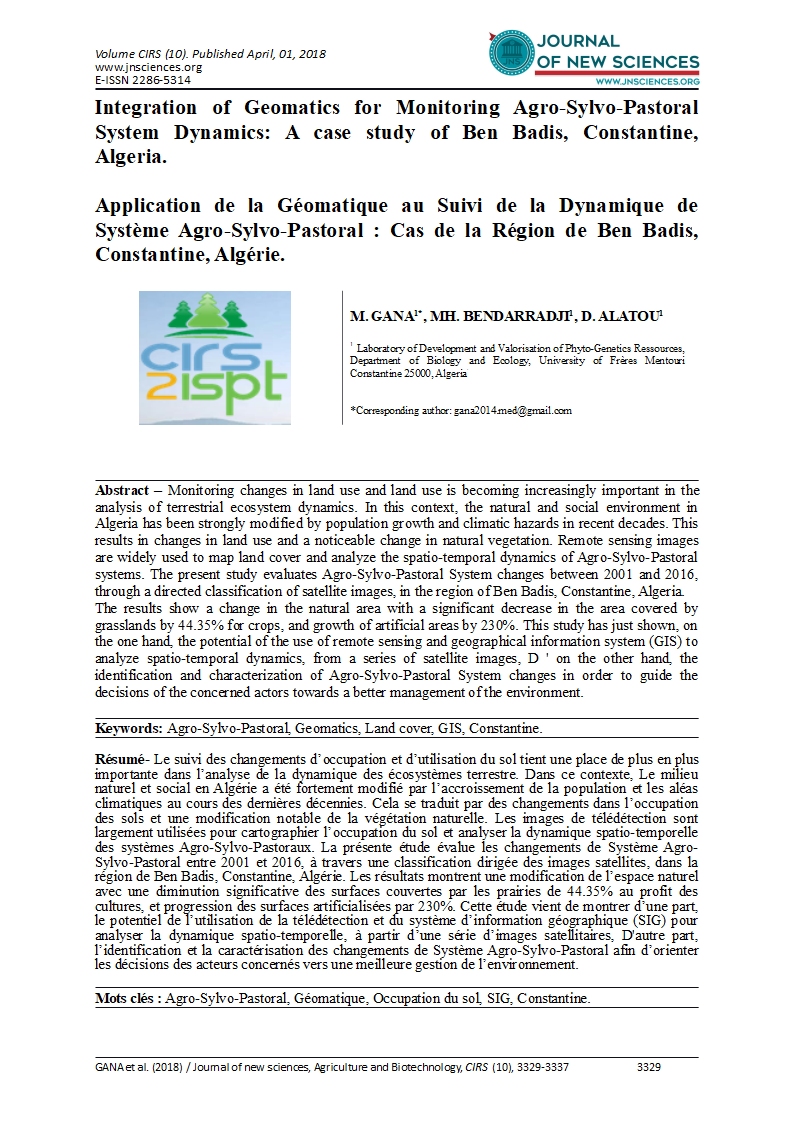
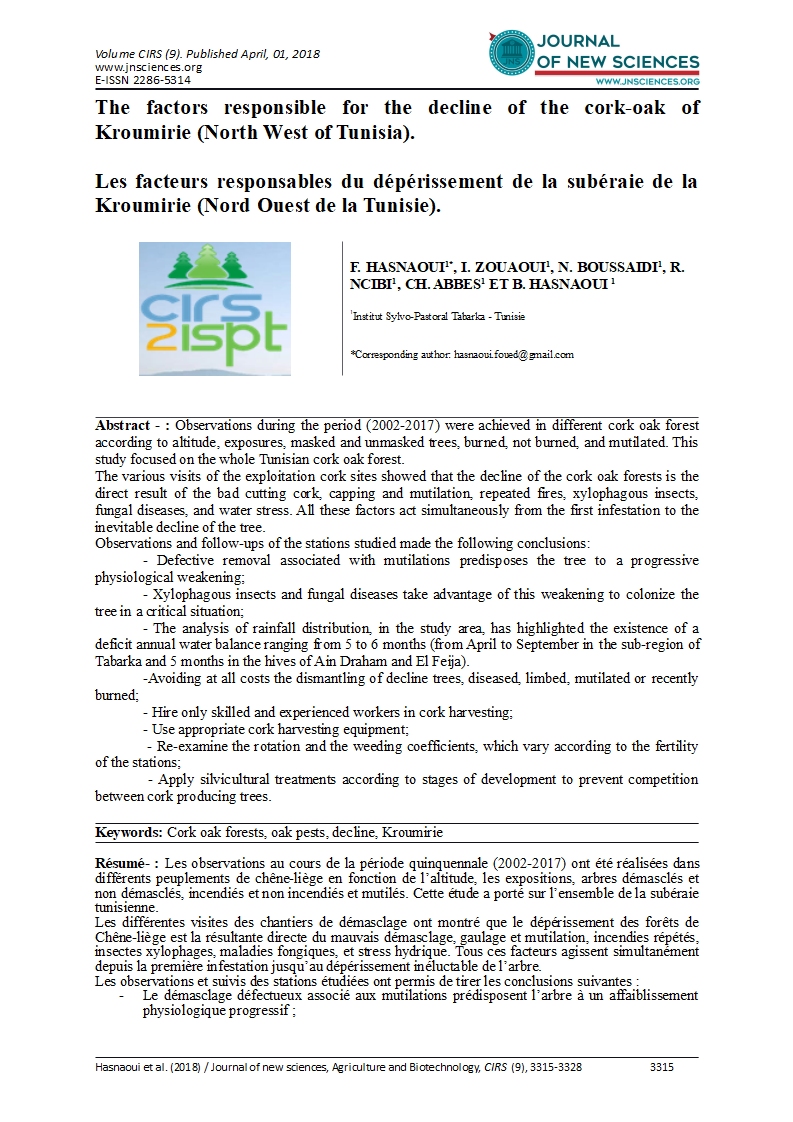
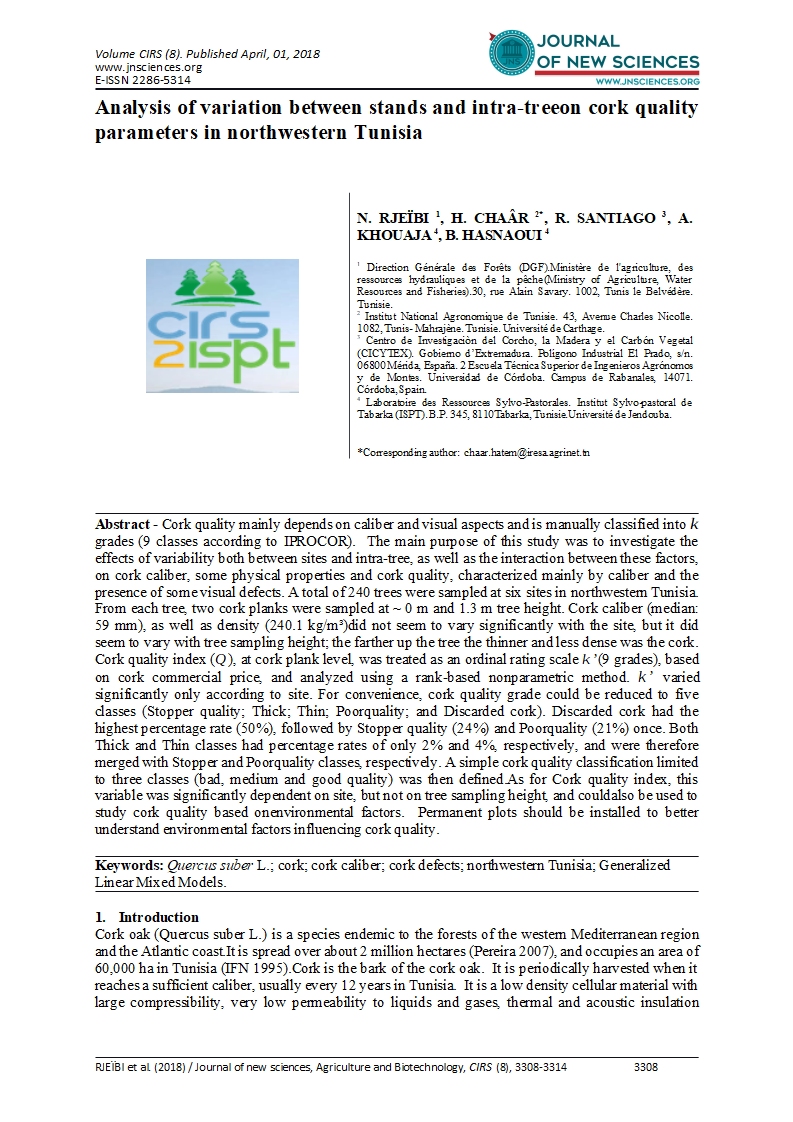
 grades (9 classes according to IPROCOR). The main purpose of this study was to investigate the effects of variability both between sites and intra-tree, as well as the interaction between these factors, on cork caliber, some physical properties and cork quality, characterized mainly by caliber and the presence of some visual defects. A total of 240 trees were sampled at six sites in northwestern Tunisia. From each tree, two cork planks were sampled at ~ 0 m and 1.3 m tree height. Cork caliber (median: 59 mm), as well as density (240.1 kg/m³)did not seem to vary significantly with the site, but it did seem to vary with tree sampling height; the farther up the tree the thinner and less dense was the cork. Cork quality index (
grades (9 classes according to IPROCOR). The main purpose of this study was to investigate the effects of variability both between sites and intra-tree, as well as the interaction between these factors, on cork caliber, some physical properties and cork quality, characterized mainly by caliber and the presence of some visual defects. A total of 240 trees were sampled at six sites in northwestern Tunisia. From each tree, two cork planks were sampled at ~ 0 m and 1.3 m tree height. Cork caliber (median: 59 mm), as well as density (240.1 kg/m³)did not seem to vary significantly with the site, but it did seem to vary with tree sampling height; the farther up the tree the thinner and less dense was the cork. Cork quality index ( ), at cork plank level, was treated as an ordinal rating scale
), at cork plank level, was treated as an ordinal rating scale  (9 grades), based on cork commercial price, and analyzed using a rank-based nonparametric method.
(9 grades), based on cork commercial price, and analyzed using a rank-based nonparametric method. 